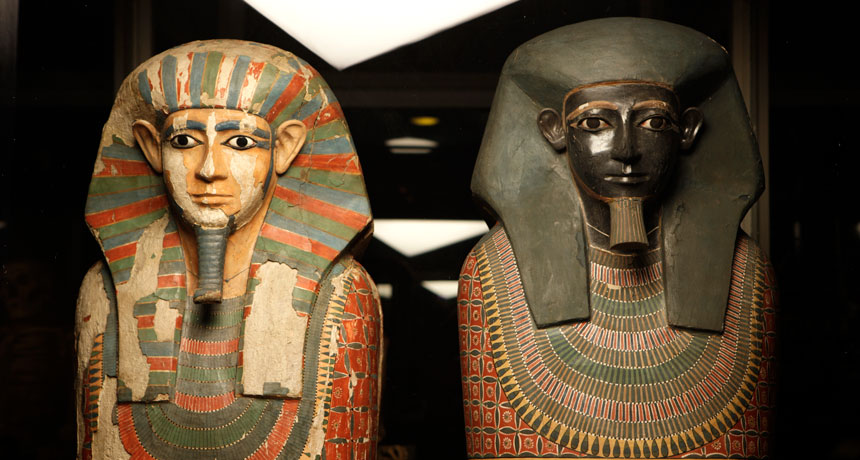DNA solves the mystery of how these mummies were related
The duo had the same mother, but different dads

MAMMA’S BOYS Ancient Egyptian mummies known as the Two Brothers, found in these coffins, had the same mother but different fathers, DNA evidence indicates.
Manchester Museum, University of Manchester